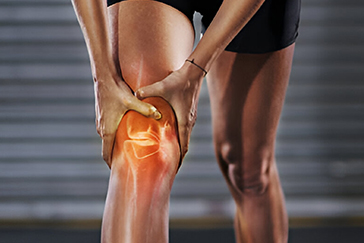 Book Appt.
Book Appt.
 Call Now
Call Now


Carpal Tunnel Syndrome (CTS) is a common and often painful condition that affects the hand and wrist. It occurs when the median nerve, which runs from the forearm into the palm of the hand, becomes compressed or squeezed at the wrist. This compression can cause a range of symptoms and may require medical intervention for relief.
Causes and Risk Factors:
The carpal tunnel is a narrow passageway in the wrist made up of bones and ligaments. When tissues within this tunnel become swollen or inflamed, they can put pressure on the median nerve. This pressure, in turn, leads to the symptoms associated with CTS. Several factors can contribute to the development of carpal tunnel syndrome:
Symptoms
Carpal Tunnel Syndrome can cause a range of symptoms, which may vary in severity. Common signs of CTS include:
Diagnosis
Proper diagnosis of Carpal Tunnel Syndrome is crucial for effective treatment. A healthcare provider will typically conduct:
Treatment
The approach to managing Carpal Tunnel Syndrome depends on the severity of the condition. Treatment options include:
Prevention
While some risk factors for CTS, such as genetic predisposition or certain medical conditions, cannot be controlled, there are steps individuals can take to reduce the risk or severity of the condition:
In conclusion, Carpal Tunnel Syndrome is a common condition that can cause pain, numbness, and weakness in the hand and wrist. Early diagnosis and appropriate treatment are crucial for managing symptoms and preventing long-term complications. Additionally, preventive measures and ergonomic practices can help reduce the risk of developing CTS. If symptoms persist or worsen, seeking prompt medical attention is advised for proper diagnosis and tailored treatment.
SHALBY Sanar International Hospitals provides extensive medical procedures backed up with our state-of-the-art technology and a team of highly qualified & experienced clinical experts.



Life Transformed: Mr. Blojah Felix Journey to Pain-Free Living | SHALBY Sanar

Pain-Free Living After 6 Years: Knee Replacement Success Story | Dr. Rohit Lamba

Bilateral Total Knee Replacement by Dr. Vikram Shah | SHALBY Sanar International Hospitals

Remarkable Recovery Story: Hip Replacement for Non-union Fracture

Incredible Recovery Story: Bilateral Knee Replacement Transformation

Knee Replacement Surgery by Dr. Rohit Lamba: 60-Year-Old's Remarkable Recovery

Renewed Hope: Successful Hip Replacement Surgery Transforms Iraqi Patient's Life

Exploring a Case of Revision Knee Replacement: Insights from Dr. Rohit Lamba

Triumphant Journey: Ms. Fatima, 69, Triumphs Over Revision Knee Replacement Surgery

Leaving the crutches behind – Riyaz, 43, gains confidence after a successful Hip Replacement Surgery

Transformative Total Knee Replacement Surgery: A New Lease on Life for 48-Year-Old Ramesh

Miraculous Recovery: 17-Year-Old Kenyan Overcomes Osteosarcoma with Mega Prosthesis Surgery

Mr. Omar Faruk's Remarkable Knee Recovery: ACL Reconstruction Success Story

Mrs. Vijay Luxmi's Remarkable Knee Replacement Journey

Umidjon, 36, from Uzbekistan shares his gratitude for a successful total hip replacement surgery

Ms. Mohsin from Iraq shares her gratitude for a successful Computer Navigated Total Knee Replacement

A Total Hip Replacement surgery gives Ms. Barry from Ghana, the ability to walk again.

Dr. Rohit Lamba talks about a successful Hip Replacement Surgery carried out on an Iraqi patient
Our doctors pen down their research findings and experiences from time to time. Their words provide deep insight into the latest techniques, technologies and other advancements in healthcare. It provides expert answers to all kinds of health questions for real-life issues.
VIEW ALL.png)
.png)



Since the day of its foundation, SHALBY Sanar International Hospitals is committed to provide comprehensive healthcare services. It regularly organizes awareness programs in its premises and encourages outdoor healthcare activities and camps with an intent to put focus on preventive healthcare.
VIEW ALL